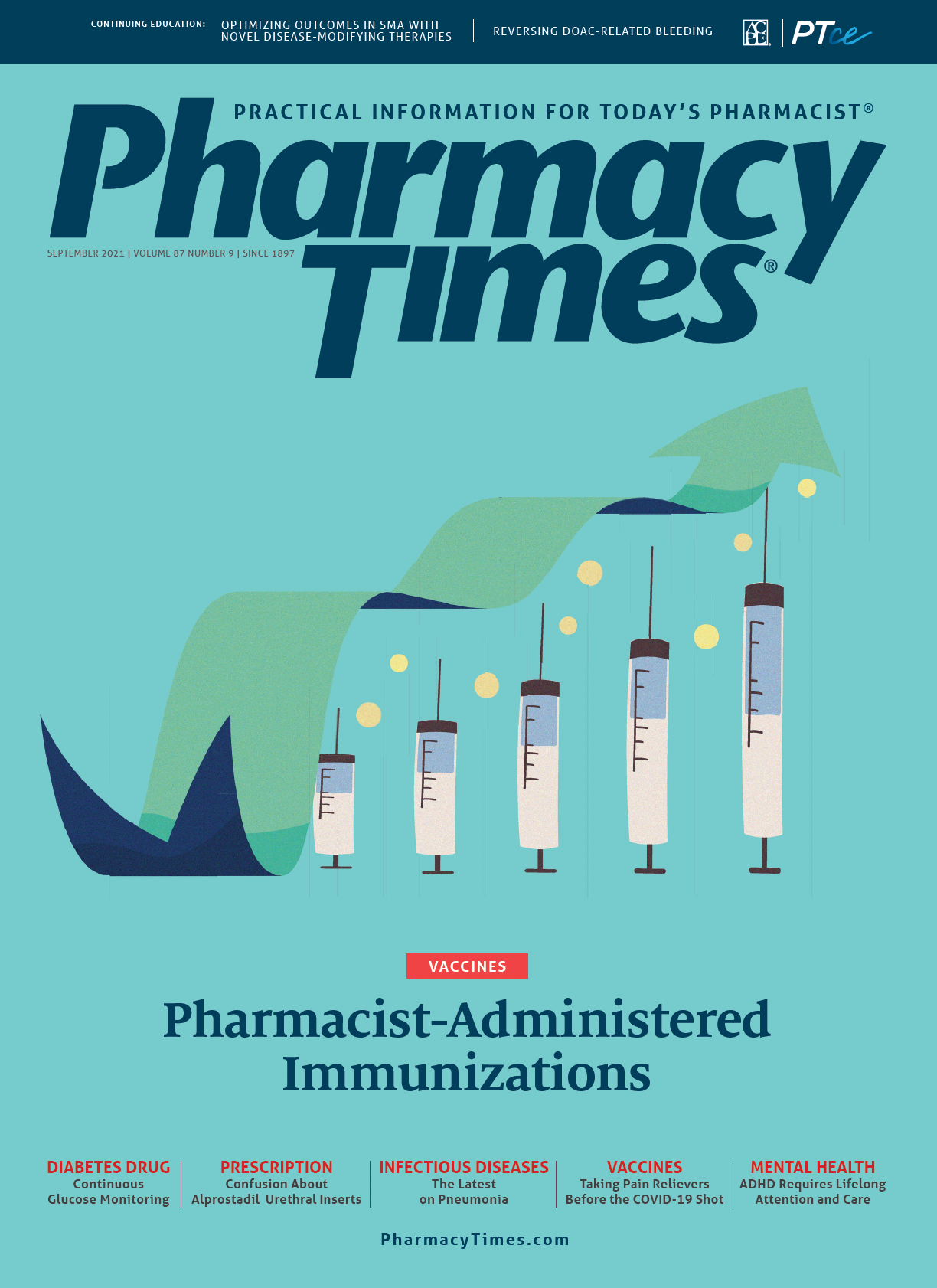Publication
Article
Pharmacy Times
Patients Report Confusion With Use of Alprostadil Urethral Inserts
Author(s):
Pharmacists should provide both verbal education and written instructions, so mistakes do not occur.
Patients often incorrectly use the product called medicated urethral suppository for erection (MUSE), a urethral alprostadil suppository prescribed for erectile dysfunction.
The medication is available preloaded in an applicator system (see Figure) and is administered by inserting the stem into the urethra after urination to ensure the urethra is wet and pressing the applicator button. Each applicator system is wrapped in a foil pouch. Six applicator systems are packaged in a carton. Patients have reported confusion regarding how to properly use this product, resulting in ineffective medication and sometimes leading to urethral hemorrhage.

One factor contributing to these errors has been the lack of adequate verbal patient education. Patients have reported that neither the prescriber nor the dispensing pharmacist explained how to administer the medication. In 1 case, the patient used the product with the protective cover still in place.
Another factor for confusion has been a breakdown in providing written instructions for use.
Despite the professional package insert stating that “a patient package insert [PPI] must be given to each patient at the initiation of therapy,” patients are not always given one.
This gap can be attributed to several issues. First, the manufacturer’s information intended for patients, including step-by-step patient instructions for administration, is printed at the end of the professional package insert meant for health care professionals. Both patients and pharmacists could easily miss these essential patient instructions, and pharmacists may not give the patient what appears to be a professional package insert.
Also, this information is confusingly referred to as “patient information” and not a “patient package insert,” as stated in the professional package insert.
Another issue is that not all prescriptions are written for a quantity of 6 applicator systems, resulting in patients being dispensed individual foil pouches and not the full carton. As there appears to be just 1 package insert in the carton of 6 applicator systems, some patients will not receive the patient package insert when the carton contents are split. The professional package insert with the included patient information could substitute for a separate PPI if there were enough of them and they were handed to each patient.
Still, it would be far better if the “patient package insert” was a document separate from the professional package insert and there were enough copies of the patient document to accommodate situations when individual pouches are dispensed.
For patients who do not receive the patient information, there are instructions on the back of each foil pouch that direct patients to 2 external manufacturer resources for information: a phone number to the company’s medical information center and the product-specific website (muserx.net). However, at press time, this website did not appear to be working, and the phone number did not lead to a direct line that walks patients through the administration process. Also, the website for the manufacturer listed in the product labeling, Meda Pharmaceuticals of Somerset, New Jersey, does not include separate updated instructions identified as a PPI.
It is critical for prescribers and dispensing pharmacists to familiarize themselves with the administration process for MUSE. They must teach patients how to administer the drug safely and verify the patient’s understanding. They also must provide patients with the manufacturer’s professional package insert with the included patient information if it is available. Other than diagrams in the product labeling, the manufacturer does not appear to provide additional information to help patients properly use MUSE. YouTube, however, has several useful videos about MUSE, including this: youtube.com/ watch?v=2sfOG6YfBCM. But the instructions may be challenging to find on YouTube with the search feature, because other products and at least 1 musical artist use the name “Muse.” It helps to include something else about the product in the search, such as “MUSE suppository” or “MUSE alprostadil.”
The Institute for Safe Medication Practices has been in contact with the FDA about this product and the issues with the patient instructions. It
is worth noting that there are other medications and dosage forms packaged in cartons containing multiple units that may not be accompanied by an adequate number of PPIs if the carton is split to accommodate prescriptions for quantities less than a full carton. For products that are routinely dispensed in quantities less than a full carton, including MUSE, manufacturers should consider including additional copies of patient instructions for each individual drug product that might be dispensed. The FDA should take this into account when interacting with manufacturers.
Michael J. Gaunt, PharmD, is a medication safety analyst and the editor of ISMP Medication Safety Alert! Community/Ambulatory Care newsletter at the Institute for Safe Medication Practices in Horsham, Pennsylvania.






